'Iconic' Singapore Indoor Stadium should be preserved amid plans for new arena, say experts
The venue has its shortcomings but with some creativity, could undergo a retrofit, according to architects.
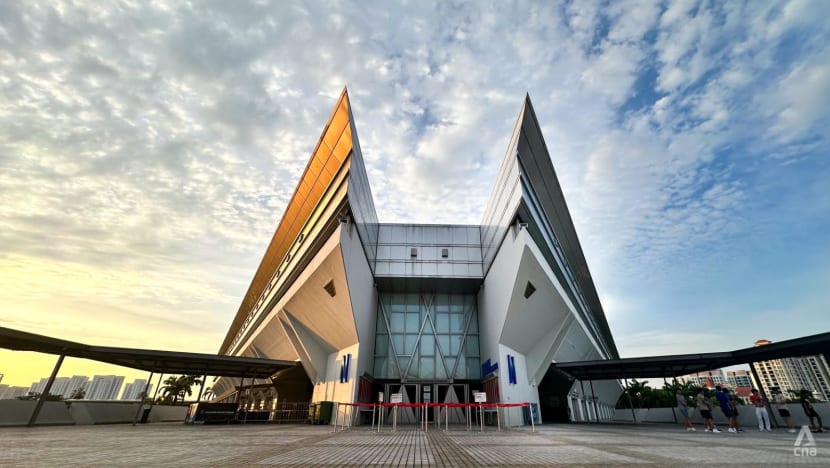
The Singapore Indoor Stadium. (Photo: CNA/Gaya Chandramohan)

This audio is generated by an AI tool.
SINGAPORE: While the Singapore Indoor Stadium holds fond memories of major concerts and sporting events for many, one of architectural photographer Darren Soh's earliest impressions of the arena was markedly different, but no less impactful.
The year was 1998 and Mr Soh, then an intern with The Straits Times paper, had been assigned to photograph a condolence wall memorialising the SilkAir flight MI185 crash which killed all on board.
"There were thousands of flowers lying on the outside of the Indoor Stadium ... I photographed someone who was bowing," he told CNA. "Covering that … gave me a sense of purpose, for someone who was so young."
Decades later, the fate of the Indoor Stadium is now up in the air, after it was announced last Thursday (Mar 7) that the authorities were planning to build a new arena adjacent to it.
The yet unnamed venue will be "among the best-in-class globally", Minister for Culture, Community and Youth Edwin Tong told parliament.
Plans are in their early stages and the Indoor Stadium, which officially opened on the last day of 1989, will continue to operate until the new arena is ready.
Asked to elaborate on these plans, the Ministry for Culture, Community and Youth (MCCY) told CNA on Friday that it was "vital" for Singapore to refresh its infrastructure and hardware to stay ahead of the competition and aim to continue being a premium destination for events.
In coming up with the new arena, MCCY will work with "domain experts" to study its various options "leading to an eventual design and other parameters", a spokesperson added.
HISTORICAL LANDMARK
Construction of the Singapore Indoor Stadium - to replace Geylang Indoor Stadium - began in 1987. It cost about S$90 million to build, and is one of Asia's tallest single-storey buildings.
It was designed by acclaimed Japanese architect Kenzo Tange, who was awarded the prestigious Pritzker Architecture Prize in 1987. He also designed Nanyang Technological University.
Experts CNA spoke to said they hoped the Indoor Stadium would be retained for its heritage value.
"The Singapore Indoor Stadium has defined the Kallang waterfront for more than three decades. Its striking and iconic architecture has housed great memories for generations," said Mr Chow Kim Nam, deputy director for Singapore Polytechnic's (SP) school of architecture and the built environment.
Mr Ho Weng Hin, co-founder of architectural conservation specialist consultancy Studio Lapis, said that after the old National Stadium was torn down, it was left to the Indoor Stadium to be "something people could relate to for an era".
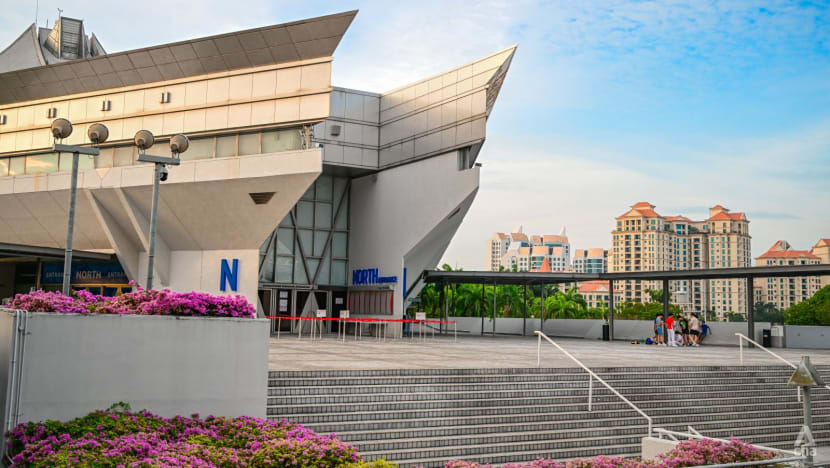
Architectural and urban historian Lai Chee Kien believes the building is part of "world architecture heritage".
"When the old National Stadium was demolished, the memory of the halcyon days of the Kallang Wave as well as other important nation-bonding memories of National Day Parades and other festivals were wiped out of this collective memory along with its destruction," he said.
Associate Professor Yeo Kang Shua from the Singapore University of Technology and Design (SUTD) was concerned by the possibility of the Indoor Stadium being demolished.
"This stadium is both part of our social history as well as architectural history. Its characteristic roof design has been a landmark in Kallang for 35 years," he said.
Demolishing the structure would also result in the release of embodied carbon - greenhouse gases released by building materials - and have a negative impact on the environment, said Mr Soh, the photographer.
"I understand that SportSG (Sport Singapore) and MCCY (the Ministry of Culture, Community and Youth) have not explicitly said that they are going to demolish it.
"So this is a chance for those of us who feel that it needs to be saved to speak up," he added.
CURRENT LIMITATIONS
Among the reasons listed for the construction of a new arena was that concerts and sporting events often require more power than the Indoor Stadium’s infrastructure can handle, MCCY said last week.
In addition, countries in the region have built or are building indoor arenas that can host more sophisticated events or have faster turnaround times. They also offer greater value propositions to spectators, such as more varied hospitality suites.
"Our competitors are not standing still, and we, likewise, must continually innovate and evolve if we want to continue to attract top-tier events," said Mr Tong in parliament.
A host of major sports and entertainment events have been held at the Indoor Stadium over the years. These range from the Rolling Stones to Sting as well as Whitney Houston and Elton John.
In the past year, it has hosted performances by Cantopop star Jacky Cheung and veteran K-pop group Shinee.
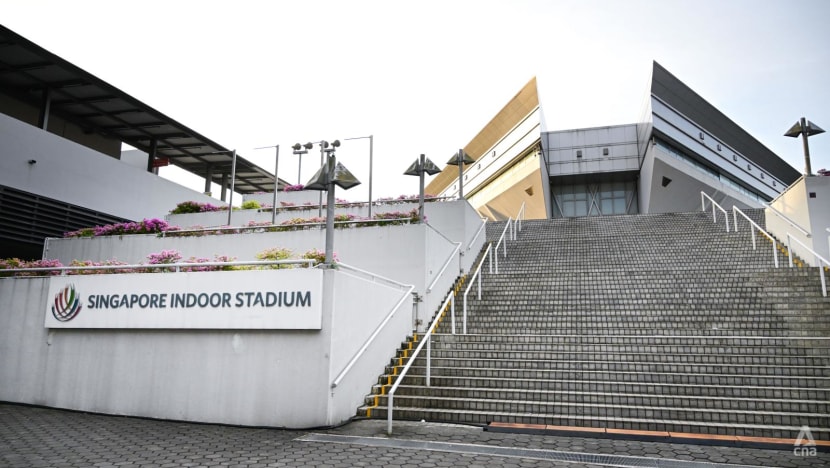
One sporting event which has been held at the Indoor Stadium for over three decades has been the Singapore Open, which made its debut there in 1990.
While the Indoor Stadium remains one of the "top few propositions" to the Badminton World Federation, Singapore Badminton Association (SBA) chief executive officer Alan Ow noted a number of challenges when organising the Open.
This includes a lack of hospitality options for corporate guests, which can make it a challenge to get sponsors on board.
Deloitte Asia-Pacific's sport business group leader Mr James Walton said this has been an issue over the years.
He gave the example of the Women's Tennis Association (WTA) finals which Singapore hosted from 2014 to 2018, where hospitality suites had to be constructed in temporary structures at the Indoor Stadium's carpark.
Subsequently, one challenge Singapore faced when bidding for men's top-tier Association of Tennis Professionals (ATP) finals was that the Indoor Stadium did not meet requirements in terms of hospitality spaces, added Mr Walton, who was an advisor on aspects of the bid.
"The world has changed in live sports and entertainment to where the experience is no longer just about what's happening on the court or on the stage in front of you," he said.
"The experience is also about what happens before the concert and after the concert, at the half-time of a sports match, and being treated like a VIP."
Another issue is that Indoor Stadium's configuration cannot accommodate the implementation of new technologies in sport such as Hawkeye, Mr Ow said.
This is a tracking system used for line-call challenges in various sports including badminton.
Space is needed for the operators of the system's cameras, and this means a section of seats has to be closed off.
"The gist will be that you are sacrificing seats because it (the arena) was not purpose-built for all this technology," said Mr Ow.
Another event held at the Indoor Stadium in 2023 was the semi-finals and finals of the World Floorball Championships.
When it comes to hosting sporting events, no venue is "perfect", and there are always areas of improvement, said Mr Adrian Tan, director of event organiser Kin Productions.
He added that event organisers have had to adapt quickly to give all participants the best possible experience at the Indoor Stadium, and acknowledged venues which have been around for a long time may not be as "well-equipped" to cope with requirements.
THE "BEST OF BOTH WORLDS"?
The standards required of a venue to host international events have become "more exacting" these days, said Associate Professor Joseph Lim from the National University of Singapore's department of architecture.
Constructing a new arena could allow for the installation of state-of-the-art audio-visual technology which the old structure could not accommodate easily; as well as ancillary spaces which could be used daily in between major events.
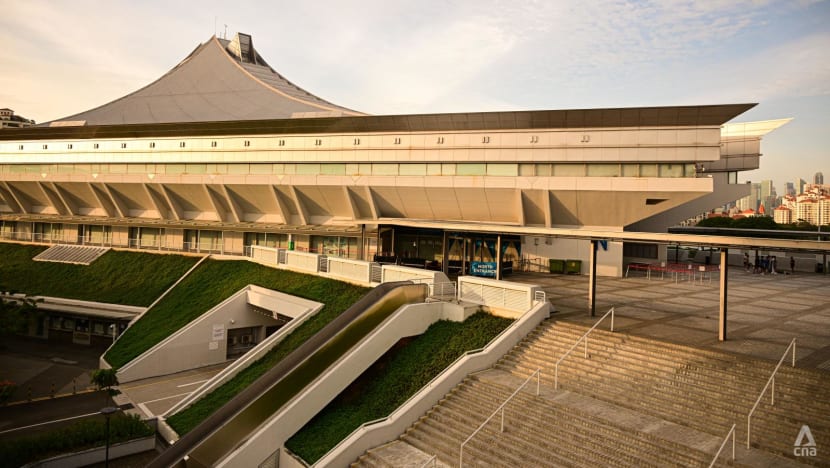
Other experts called on the authorities to also consider upgrading and retrofitting the Indoor Stadium.
They pointed to another building designed by the Japanese architect Tange, the Yoyogi National Gymnasium in Japan, which was built for the 1964 Tokyo Olympics. It later underwent various refurbishment works and eventually served as a competition venue for the 2020 Olympics.
At the same time, the experts acknowledged the limitations of a retrofit.
Increasing seating capacity, for instance, would be challenging given the Indoor Stadum's age and design, including its characteristic "roof-form".
"However, it would be prudent to assess all repurposing options in the spirit of approaching development sustainably," said SP's Mr Chow.
Mr Ho, the consultant, suggested extensions to the current building. "It is (on) the creativity of the owners, creativity of the designers, the planners, how to make it work."
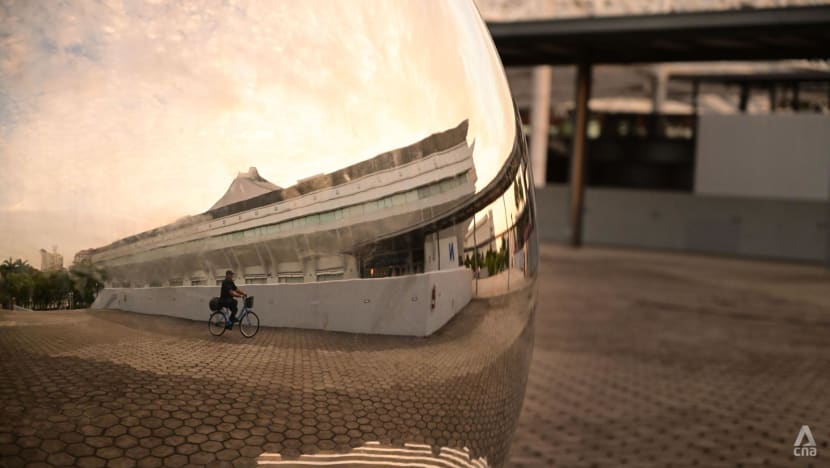
A refurbished Indoor Stadium can co-exist alongside a new arena, said Mr Chow.
"The demand for venues to host local, regional and international events, even concurrently, would suggest that there are benefits to sustaining the Singapore Indoor Stadium alongside the new arena," he said.
"It could provide a less expensive venue to host local concerts, sports competitions and ceremonies."
SBA's Mr Ow said his hope was for the "best of both worlds" as the Indoor Stadium, to him, remains an ideal venue for concerts and sporting events of a certain crowd size.
The new arena, as an add-on, could have more state-of-the-art technologies and bigger seating capacity.
"If we are looking at Kallang overall as a sporting hub, then it can do a lot more with two different (indoor) stadiums."















